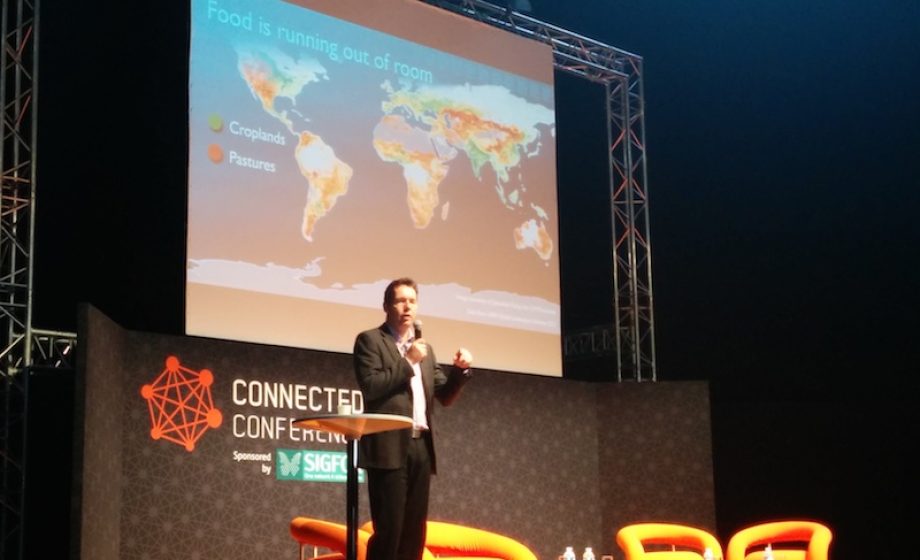
[LIVEBLOG] The Connected Conference, the first international conference dedicated to the Internet of Things, welcome this morning in Paris Gary Atkinson, Director of Emerging Technologies at ARM to discuss how IoT can help out the big challenges humanity faces.
Gary Atkinson identifies four main challenges that the planet is heading towards, and that IoT can contribute to solve.
Food is running out of room. The world population is using 40% of land mass to grow food – about 60 times more than we use for or living space. If we add up crop lands, they represent the size of South America. Pastures lands equal the size of Africa.
Water is our rarest commodity. Compared in absolute size, Earth corresponds to the size of a basket ball. All the water on the planet equals the size of a ping pong ball. Less than 1% of it can be drink. India is the biggest water consumer – and also one of the biggest food producer, twice as much as China, the second. In London, 40% of the water is lost during distribution.
Energy needs to be cheaper to be efficient. The delta between how much energy we can generate VS the peak demand in the UK last year is 4%. Knowing the best wind or solar power is about 10 times more expensive than coal energy induces we should produce best but also reduce consumption of energy.
Healthcare is a growing problem entailed by an ageing population. The potential support ratio (number of active people compared to retired people) is dropping down from 12 in 1950 to 4 in 2050. Life expectancy has improved, yet when older population are more likely to have chronic diseases which implies a need for constant care.
Added to those four main challenges, transport can be seen as a fifth one. Soon, Gary Atkinson points out, everyone will be able to afford cars, but won’t be able to afford to park of fuel.
Solving these big challenges needs the IoT
Connected intelligence means the additions of sensing and controlling technologies with wireless network and cloud-based services (especially since M2M communication is not yet mature).
Apply to water, the IoT could for instance make desalinisation coming to a cost-effectiveness point. Another example: today, India uses mostly a pivot irrigation system, which means 30% of land is lost and 50 to 60% of water is lost by evaporation. The switch to tape based irrigation could save 2/3 of the water used. This implies to measure where the water is needed using water-sensors.
Energy consumption could be reduced thanks to a smarter consumption and the implementation of micro generation storage. Knowing that lightning is the second biggest consumer of energy (after motors), and that there are about 1 billion streetlights in the world, upgrading streetlights infrastructure would tremendously impact the world consumption.
Healthcare can tremendously be improved thanks to smartphones used for personal monitoring.
Actors are already onboarding these issues. On Farm works on precision agriculture, EnLight works on streetlight efficiency, and Scanadu on chronic disease management.
According to Gary Atkinson, in order to work, solutions need to be cheap (last than 2$ a year to emit signals), have a long-lasting battery (10 years), and need to emit signals at least 5 miles, since building ad hoc networks is too expensive. In order to deliver that, companies are implementing what is needed: Sigfox, for public networks, Eightless, for private networks and Enlight, for new thinking.
Partnerships will be needed to ensure that connectivity becomes a standard, to implement trust and interoperability.
Disclaimer: all live-blogging posts from the Connected Conference might contain grammar mistakes and imprecisions. A full review will be posted after the event.

